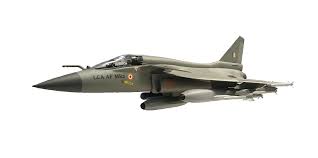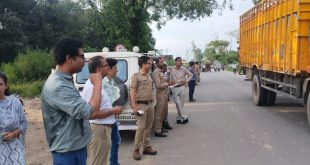New Delhi: The upgraded version of the indigenous supersonic fighter aircraft Tejas MK1A (MK1A ) is expected to be delivered to the Indian Air Force by July. The report said that the upgraded version of MK1, LCA Tejas MK1A, took its first successful test flight on March 28 this year, which was a historic moment in India’s fighter jet development program.
The Light Combat Aircraft (LCA) program was conceived in the late 1980s to replace the MiG-21 and Su-7S fleet. The program got a boost in the late 90s. On January 4, 2001, the Technology Demonstrator-1 (TD-1) version of the LCA was flown into the air and named ‘Tejas’, which was an important moment in the history of the Indian Air Force.
The second series production (SP2) Tejas aircraft was given initial operational clearance in 2016. The Tejas Mk1 variant was inducted into the Air Force’s No. 45 Squadron – ‘The Flying Daggers’. Later, another Tejas squadron, No. 18 Squadron – ‘The Flying Bullets’ started operating the Mk1 variant.
How is Tejas MK1A different?
The Indian Air Force has ordered 83 Tejas Mk1A variants in a Rs 36,468 crore deal with Hindustan Aeronautics Limited. In November last year, the Defence Acquisition Council approved the project to procure 97 more Tejas jets for the Indian Air Force.
On March 28, Group Captain KK Venugopal (retired), a test pilot, took the Tejas Mk1A to the skies and remained in the air for 15 minutes. The sortie was the first successful flight of the Mk1A version of the fighter jet.
LCA Tejas Mk1 test pilot Group Captain Suneet Krishna told NDTV India, “Over time, technology has to be improved and integrated. The Indian Air Force wanted new systems to be integrated in the Tejas so that it can remain in service for the next three decades.” “The aircraft may look the same from outside, but new electronics, processors, display systems and hardware of the fly-by-wire system have been integrated. In the list, it has a new AESA radar, air-to-ground radar, air-to-air mode and self-protection jammer, and the mission computer in the Mk1A is new and indigenous,” Group Captain Krishna said.
The design of an aircraft creates limitations in integrating new systems. HAL has incorporated the latest technology with minor modifications in the design to deliver the new aircraft.
The new variant will have about 50 per cent more indigenous content than the older one. The MK1A version will have 40 more improvements than the previous one. The Tejas Mk1A will have the advanced Israeli EL/M-2025 AESA (Active Electronically Scanned Array) radar. It will soon be replaced by the Uttam AESA radar indigenously developed by Bharat Electronics Limited and HAL.
The Uttam radar can track multiple targets and reportedly has a range of over 200 km to give the aircraft a 360-degree scan view of its surroundings. It will be used in later variants such as the Tejas Mk2 and Twin Engine Deck-Based Fighters (TEDBF).
HAL has maintained a commonality between the Mk1 and Mk1A variants. The new version will have enhanced situational awareness with a slightly larger canopy and changes to the jet aerodynamics to improve its maneuverability.
The underbelly of the MK1A will have around nine hard points to carry a variety of weapons such as Beyond Visual Range (BVR) missiles, air-to-air/ground missiles and Advanced Short Range Air-to-Air Missiles (ASRAAM). External self-protection jammer pods will allow the aircraft to engage in electronic warfare.
The Tejas jet was integrated with an indigenously developed digital fly-by-wire flight control computer. Fly-by-wire systems replace mechanical flight controls with an electronic interface in aircraft flight control systems.
The Defence Ministry said, “In a significant development towards the Tejas Mk1A programme, the Digital Fly-by-Wire Flight Control Computer (DFCC) was integrated into the prototype LSP7 and successfully flown on February 19.”
HAL said, “Tejas Mk1A will have advanced electronic radar, combat and communication systems, additional combat capabilities and improved maintenance facilities.”
The new electronic warfare suite includes a radar warning receiver (RWR) system and Advanced Self Protection Jammer (ASPJ) pod will be installed in the Mk1A. The system is aimed at protecting the aircraft from ground-based acquisition radars, fire control radars, anti-aircraft artillery and airborne multimode radars.
Tejas – the lightest, the smallest
The Tejas is the smallest and lightest aircraft in its class and its dimensions and extensive use of composite structure make it lightweight. The 4.5 generation aircraft can be used for multiple roles like ground attack, interception, air-to-air combat and air defence.
The Air Force plans to raise the first squadron of indigenous LCA Mark 1A fighter aircraft at the Nal airbase in Bikaner district of Rajasthan near the Pakistan front. The Tejas will replace one of the two MiG-21 squadrons already deployed, ANI reported.
In the 23 years of its history since the first test flight in 2001, the Tejas aircraft has achieved a great success.
 Indian Thought Latest News & Views
Indian Thought Latest News & Views



